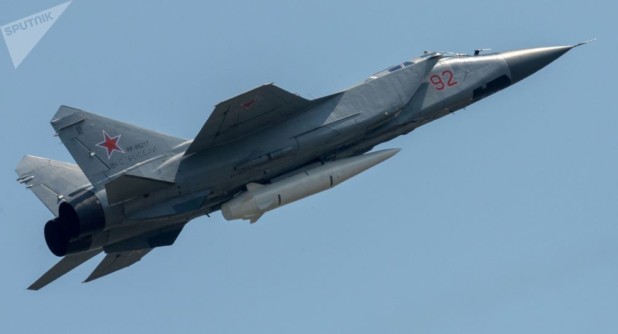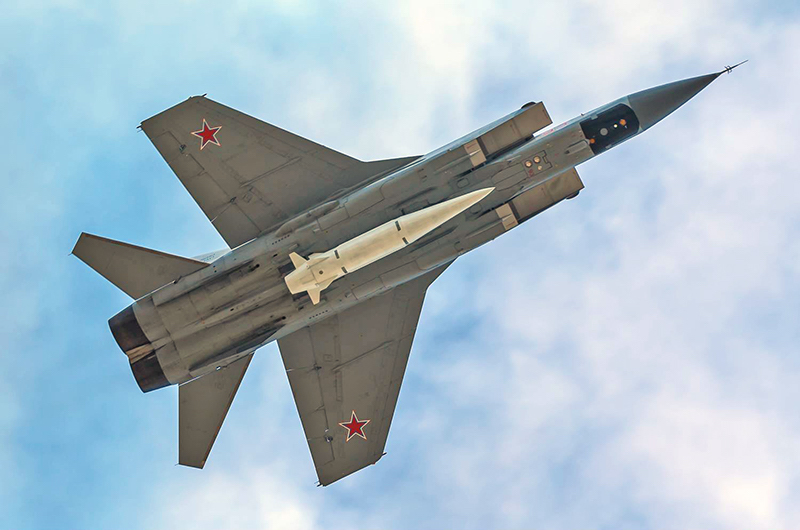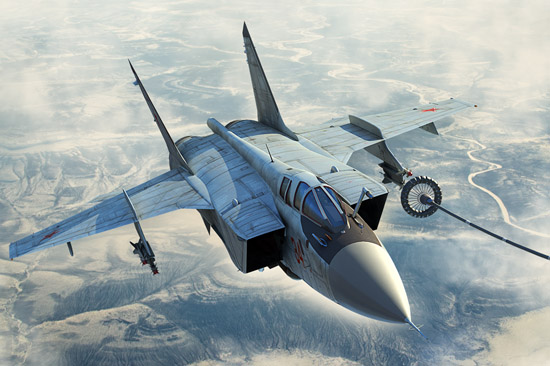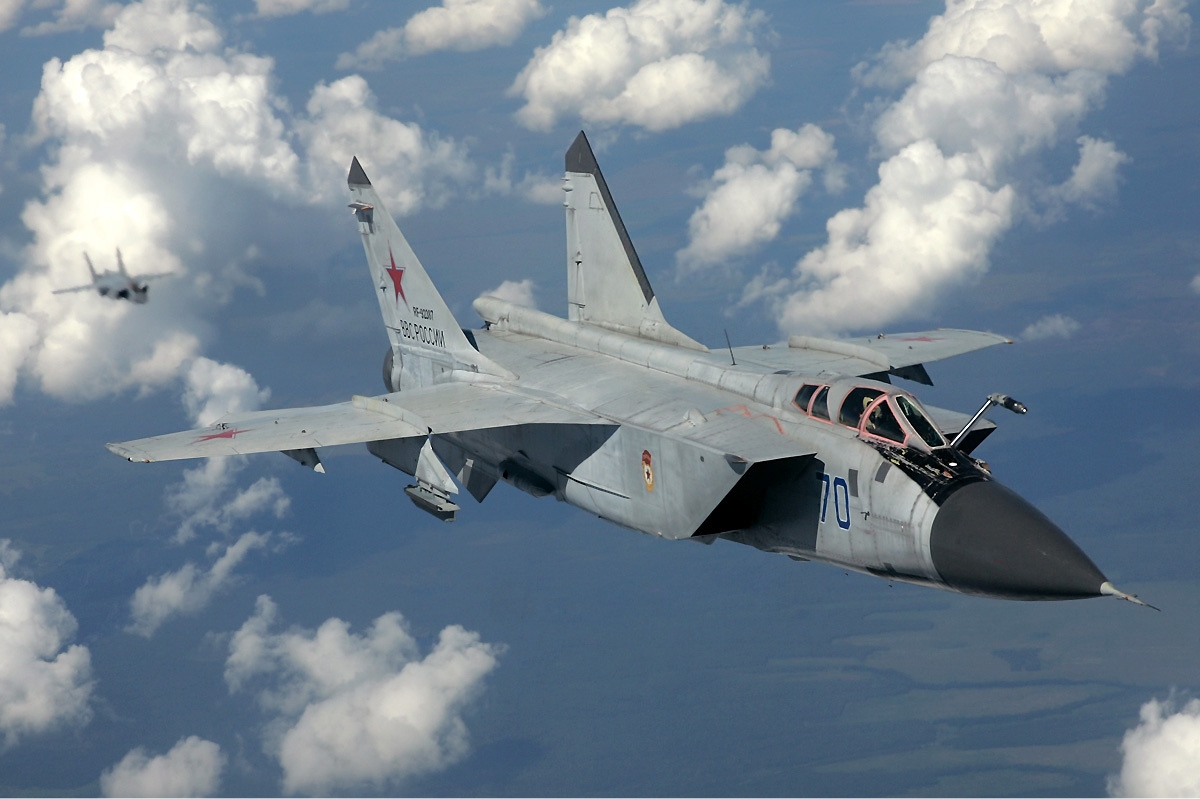The R-33 has been significantly upgraded since first entering service, and those deployed by modern MiG-31 fighters have since 2012 retained a range of over 300km. Their targeting systems have also been improved, allowing them to strike with a greater degree of precision. The missiles travel at speeds of up to Mach 6, making them extremely difficult to evade even for smaller aircraft at extreme ranges. The only major shortcoming of these missiles is their size and 500kg weight, which means they cannot be widely operated by other Russian aircraft. Fighters such as the Su-35 and U.S. F-22 Raptor are restricted to engagement ranges of 130km and 105km respectively against airborne targets, giving the Russian interceptor a significant advantage in its strike range and allowing it to pose a greater danger in beyond visual range engagements.
A third air to air missile developed for the MiG-31 was the R-37, a platform capable of engaging hostile targets at ranges of 400km. This missile was less precise than the R-33 at extreme ranges but specialised for targeting enemy support aircraft such as AWACS, aerial tankers and command platforms which lacked the speed and manoeuvrability of fighters. Heavy bombers were also potential targets. The key was to deploy the missiles to quickly eliminate these valuable and extremely costly airborne heavy platforms well beyond the range of their fighter escorts, making them effectively obsolete in a major war. Indeed according to U.S. Air Force Secretary Heather Wilson, citing the risk posed by Russian long range anti aircraft missiles, American heavy platforms “would be shot down in the first day of conflict” and alternatives needed to be urgently sought out.
While the MiG-31 was initially designed as an interceptor, more recently a number of aircraft have been modified for a long range strike role. The platform has become perhaps the most capable ship hunting strike aircraft as of 2018 when equipped with the Kh-47M2 Kinzhal hypersonic missile. These missiles retain a range of 2000km, and combined with the MiG-31’s own long strike range give the Russian Air Force the ability to strike hostile warships at distances of up to 3,500km from its coasts. The Kinzhal’s speed and high level of manoeuvrability make it invulnerable to even the most modern air defence systems, and provide Russia with a lethal ‘carrier killer’ long range strike capability with the ability to disable even the largest warships at extreme ranges. Impacting at speeds of up the Mach 10, the sheer kinetic energy imparted by the missile is enough to tear even U.S. supercarriers in half with a single direct hit even without accounting for the additional destructive capability of the missile’s sizeable warhead. A pairing of the MiG-31, possibly Russia’s most lethal combat aircraft, with the new hypersonic missile poses a severe threat to the country’s potential adversaries. The MiG-31 today retains capabilities unparalleled by any other combat aircraft both as an air to air combat platform, when equipped with the R-33 and R-40, as a ship hunter armed with the Kh-47M2 and for targeting enemy heavy support aircraft when deploying the R-37. Almost 40 years after entering service, the MiG-31 remains one of the most formidable assets of the Russian military today.





Sorry, comments are closed on this post.